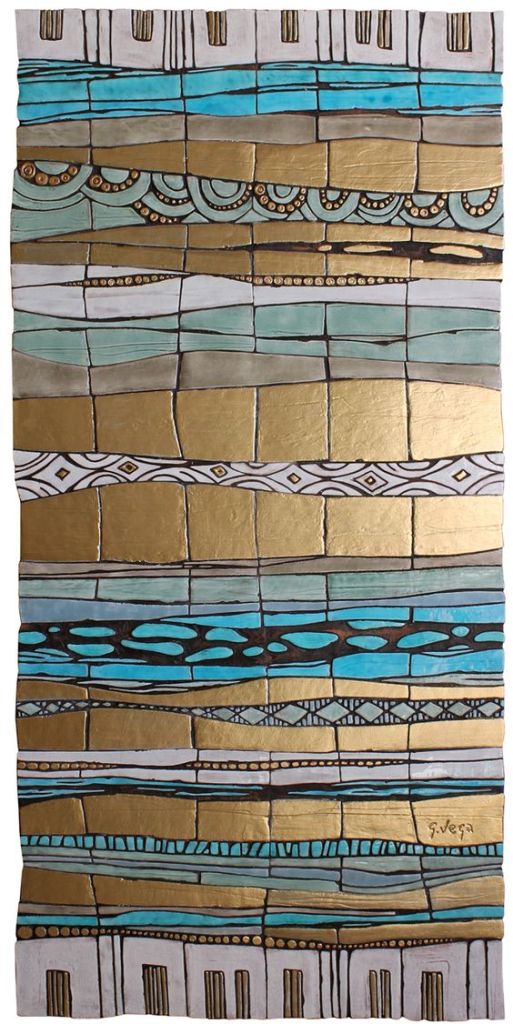We’re in that odd, calm few days between Christmas and New Year which I love if I’m at home, as we are this year, with plenty of time for reviewing and reflecting at a personal level.
Several fellow SAQA artists were recently pondering how they keep whatever records they do – titles, dimensions, dates of completion, buyers, wales records, exhibition records, artist statements and more items I’d never bother with – like keeping working drawings and patterns made and used – none of which really apply to my way of working. I don’t usually fully document the working of each art quilt, but sometimes blog with ideas and pics, or samples, sometimes, in addition to diagrams in my blank notebook, perhaps a list of possible titles there, too, as I work through each piece. Several mentioned using Excel data sheets for each work – I used to keep an index card file which is still inaccessible in the filing cabinet in storage.
It all set me thinking that my records and the minimal planning I do could be a bit more organised, which could describe my sewing room, too – and in each case, everything relevant is there, but not necessarily 100% ‘tidy’. I think back on how wonderful has been my own progression from the end of the one table in the tiny first house we lived in, to a table and work area in a guest room (that had to be packed up and cleared away for visitors several times a year) to an actual cupboard of my own with a fold out work table and powerpoint for my machine, to finally an actual room completely my own in a house with too many bedrooms (nest emptying) which I’ve essentially acquired in every move since the late 80s, and I’ve always been grateful for it, even if there’s never been a wet space, and storage is not ideal – and all that does have an influence on what I do.
As this quiet period began, I offered guidance to someone who was wondering how to write an artist statement for their quilt to enter it somewhere, and thought it could be a good idea to set up a document file containing progress images, lists of word associations, synonyms, a quote etc, that might suggest an eventual title and make the writing of a statement for the work much easier once it was done.
I seem to have taken this a step further this morning, in actually planning a couple of works ahead of calls I will want to enter this coming year, especially ArtQuiltAustralia 25, and Quilt National 25. I thought about my recent work, and noting at the top of this planning doc “Make works the same size eg 95h x 130w, that if accepted will roll in FedEx tube. These new works need to reflect my current focus on texture and grids of a kind…”, but this statement in no way binds me to stick to that plan 🙂
Back in 2021 I did a SAQA 100 day challenge (the link takes you to a blog post I wrote about it) and one of the samples I made in that challenge was a small 3.25inch sample in fused fabric and stitch, inspired by an intriguing image I saw on Pinterest of a painting by an unidentified Australian Aboriginal artist, and part of that interpretation I used it as the header for my FB Fabric Artist page.

I’d like to follow that idea further, as I did earlier this year

Other bullet points on the planning doc include ideas about stitched squares, with this sample from the same 100 day challenge, beginning my experimentation with them….

And I’ve also got ‘holes’ and ‘grids’ on my mind, too, so they’re involved in the planning process. On Pinterest I save images of holes and grids both of which, for different reasons, I find thought provoking.













